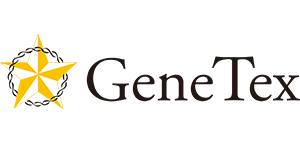CXCL11 antibody (18C54)
CXCL11 antibody (18C54)
SKU
GTX04815-100
Packaging Unit
100 μl
Manufacturer
GeneTex
Availability:
loading...
Price is loading...
Clone Name: 18C54
Application Note: WB: 1:500-1:2000. ICC/IF: 1:50-1:200. *Optimal dilutions/concentrations should be determined by the researcher.Not tested in other applications.
Calculated MW: 10
Form: Liquid
Buffer (with preservative): PBS, 150mM NaCl, 0.04- 0.05% BSA, 50% Glycerol, 0.02% Sodium azide.
Concentration: Batch dependent (Please refer to the vial label for the specific concentration.)
Background: Chemokines are a group of small (approximately 8 to 14 kD), mostly basic, structurally related molecules that regulate cell trafficking of various types of leukocytes through interactions with a subset of 7-transmembrane, G protein-coupled receptors. Chemokines also play fundamental roles in the development, homeostasis, and function of the immune system, and they have effects on cells of the central nervous system as well as on endothelial cells involved in angiogenesis or angiostasis. Chemokines are divided into 2 major subfamilies, CXC and CC. This antimicrobial gene is a CXC member of the chemokine superfamily. Its encoded protein induces a chemotactic response in activated T-cells and is the dominant ligand for CXC receptor-3. The gene encoding this protein contains 4 exons and at least three polyadenylation signals which might reflect cell-specific regulation of expression. IFN-gamma is a potent inducer of transcription of this gene. Two transcript variants encoding different isoforms have been found for this gene. [provided by RefSeq, Oct 2014]
Uniprot ID: O14625
Antigen Species: Human
Immunogen: A synthesized peptide derived from human CXCL11
Purification: Purified by affinity chromatography
Conjugation: Unconjugated
Full Name: C-X-C motif chemokine ligand 11
Application Note: WB: 1:500-1:2000. ICC/IF: 1:50-1:200. *Optimal dilutions/concentrations should be determined by the researcher.Not tested in other applications.
Calculated MW: 10
Form: Liquid
Buffer (with preservative): PBS, 150mM NaCl, 0.04- 0.05% BSA, 50% Glycerol, 0.02% Sodium azide.
Concentration: Batch dependent (Please refer to the vial label for the specific concentration.)
Background: Chemokines are a group of small (approximately 8 to 14 kD), mostly basic, structurally related molecules that regulate cell trafficking of various types of leukocytes through interactions with a subset of 7-transmembrane, G protein-coupled receptors. Chemokines also play fundamental roles in the development, homeostasis, and function of the immune system, and they have effects on cells of the central nervous system as well as on endothelial cells involved in angiogenesis or angiostasis. Chemokines are divided into 2 major subfamilies, CXC and CC. This antimicrobial gene is a CXC member of the chemokine superfamily. Its encoded protein induces a chemotactic response in activated T-cells and is the dominant ligand for CXC receptor-3. The gene encoding this protein contains 4 exons and at least three polyadenylation signals which might reflect cell-specific regulation of expression. IFN-gamma is a potent inducer of transcription of this gene. Two transcript variants encoding different isoforms have been found for this gene. [provided by RefSeq, Oct 2014]
Uniprot ID: O14625
Antigen Species: Human
Immunogen: A synthesized peptide derived from human CXCL11
Purification: Purified by affinity chromatography
Conjugation: Unconjugated
Full Name: C-X-C motif chemokine ligand 11
| SKU | GTX04815-100 |
|---|---|
| Manufacturer | GeneTex |
| Manufacturer SKU | GTX04815-100 |
| Package Unit | 100 μl |
| Quantity Unit | STK |
| Reactivity | Human |
| Clonality | Monoclonal |
| Application | Immunofluorescence, Western Blotting, Immunocytochemistry |
| Isotype | IgG |
| Human Gene ID | 6373 |
| Host | Rabbit |
| Conjugate | Unconjugated |
| Product information (PDF) | Download |
| MSDS (PDF) |
|

 Deutsch
Deutsch







